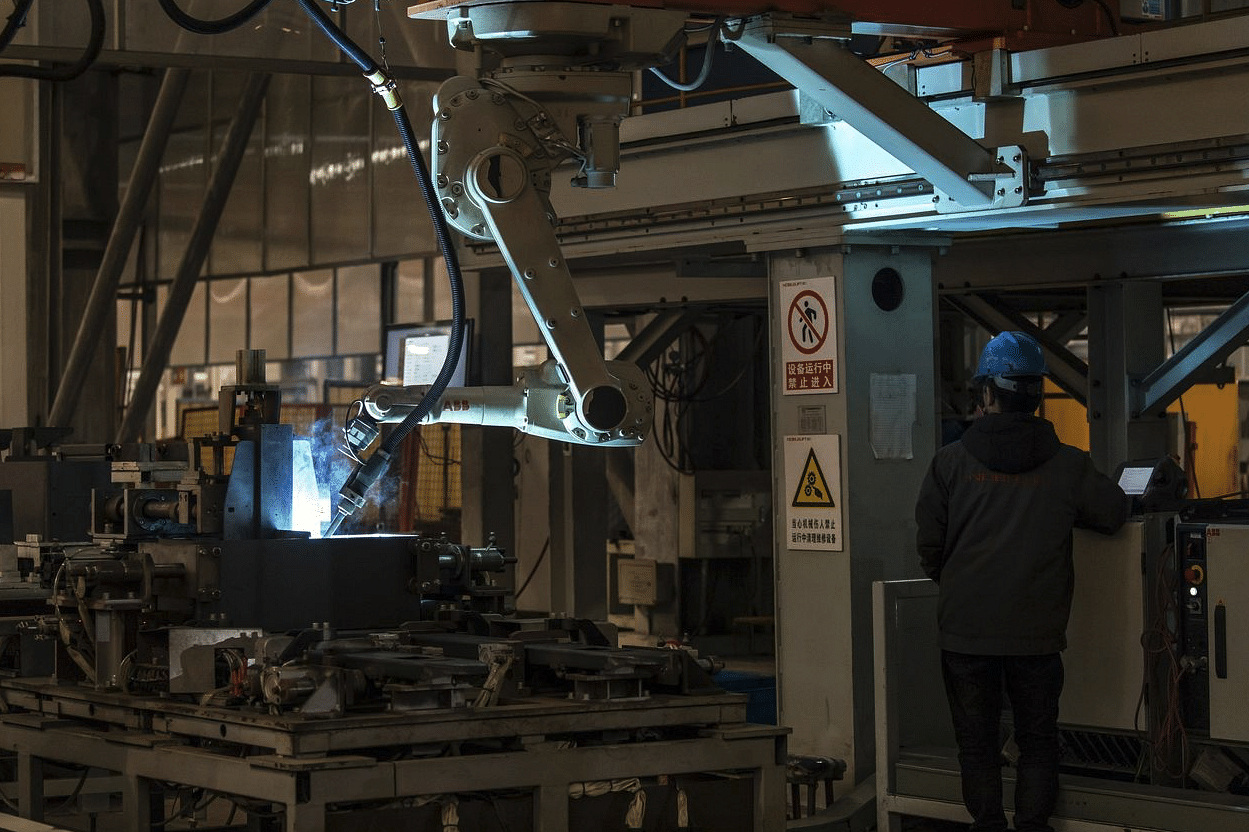World
Explained: Is China's Industrial Automation Push A Panacea?
- To maintain and consolidate its manufacturing dominance, as it struggles with an ageing population, China is aggressively pushing for robotics.
- Most policies are about trade-offs. Especially when one takes a long-term view. What will be the implications of this robotics push?

A Chinese production line
The fact that China faces a demographic challenge as the percentage of its working age population begins to decline is well known.
This leads to obvious labour supply challenges. Especially as wages rise, the cheap labour that China relied on for so long, isn't that cheap anymore.
In such a circumstance, how does a nation maintain its manufacturing dominance?
This is where robotics comes in. To maintain and consolidate its manufacturing dominance, as it struggles with an ageing population, China is aggressively pushing for robotics.
China is keen to avoid the hyper-financialisation of its economy and maintaining a strong manufacturing base is a key aspect of this goal.
China has realised that by merely relying on its labour, it won't be able to consolidate its manufacturing dominance.
Hence, the aggressive push for industrial robots as the workforce shrinks.
Last year, the amount of robots China installed in its factories almost totalled the amount of robots installed by the rest of the world (combined).
This data point, perhaps one of the most important data point, hardly received any attention.
As per data from the International Federation of Robotics, quoted in a report by the Journal, the shipments of robots to China in 2021 surged by 45 per cent, compared to the previous year.
Nearly half of all installations of heavy-duty industrial robots last year occurred in a single nation - China.
Unsurprisingly, China remains the numero uno market for robot manufactures worldwide.
The International Federation of Robotics data indicates that the number of robots installed in China, doubles the number of robots installed in Europe and the Americas.
Of course, one could always say that this is China merely catching up with its richer peers but is that really the complete explanation?
It seems that this development has more to do with a recognition in China that it needs to automate its production lines as wages rise and supply of labour declines.
According to UN projections, the working age population of China is going to fall rather steeply after 2030.
In the 'west', there is already a lot of talk of reshoring and friend-shoring.
The intention to shift production back home or shifting it to other countries with cheap labour, who are aligned with America's grand strategic aims of containing China, is palpable.
Although some might say not palpable enough, however, that is a tangent.
The promise of shifting production back home to Northern America is good for campaign speeches but in most cases not really feasible. The cost of products will rise dramatically.
The concept of friend-shoring poses more risk to China. By embracing robots China can keep costs down in the long term and make the firms think twice before they move their production line out of China.
Large scale automation in production lines is necessary for China to escape the middle-income trap.
As per data from the UN, despite geopolitical friction with the US, and talks about decoupling, China remains the world's factory floor.
Chinese factories account for nearly 30 per cent of global manufacturing.
China cannot afford to wait until the 2030s, the time when its working age population begins to fall steeply, to deal with this challenge.
If they want to maintain their manufacturing base, they must start preparing for the 2030s now.
The automation data reveals that the Chinese are well aware of the problem and have started their preparation.
Director of Greater China research, Jay Huang said to the Journal that, "the economics of China’s shifting labor market and improving robot technology mean China is likely entering a robot-adoption boom."
The automation push is not a panacea or a silver bullet. Most policies are about trade-offs. Especially when one takes a long-term view.
The push for automation will inevitably lead to higher unemployment.
Even though China's working age population is witnessing a decline, unemployment, especially in rural areas, remains a pervasive problem.
Poverty isn't a rare sight in rural areas as well. A recent film that released in China, 'Return to Dust' showcases what life is like in parts of rural China.
The film became rather controversial because it dared to show the reality of life in rural China.
Most of these people no longer want to work in the agricultural sector.
The notorious Chinese factory floors are an improvement for most of these people. Working in assembly lines is better than working a field.
If the automation push is widespread, where will these workers go? For now, it seems China is adopting the mindset that says 'we'll think about it when we cross that bridge'.
Support Swarajya's 50 Ground Reports Project & Sponsor A Story
Every general election Swarajya does a 50 ground reports project.
Aimed only at serious readers and those who appreciate the nuances of political undercurrents, the project provides a sense of India's electoral landscape. As you know, these reports are produced after considerable investment of travel, time and effort on the ground.
This time too we've kicked off the project in style and have covered over 30 constituencies already. If you're someone who appreciates such work and have enjoyed our coverage please consider sponsoring a ground report for just Rs 2999 to Rs 19,999 - it goes a long way in helping us produce more quality reportage.
You can also back this project by becoming a subscriber for as little as Rs 999 - so do click on this links and choose a plan that suits you and back us.
Click below to contribute.
Latest